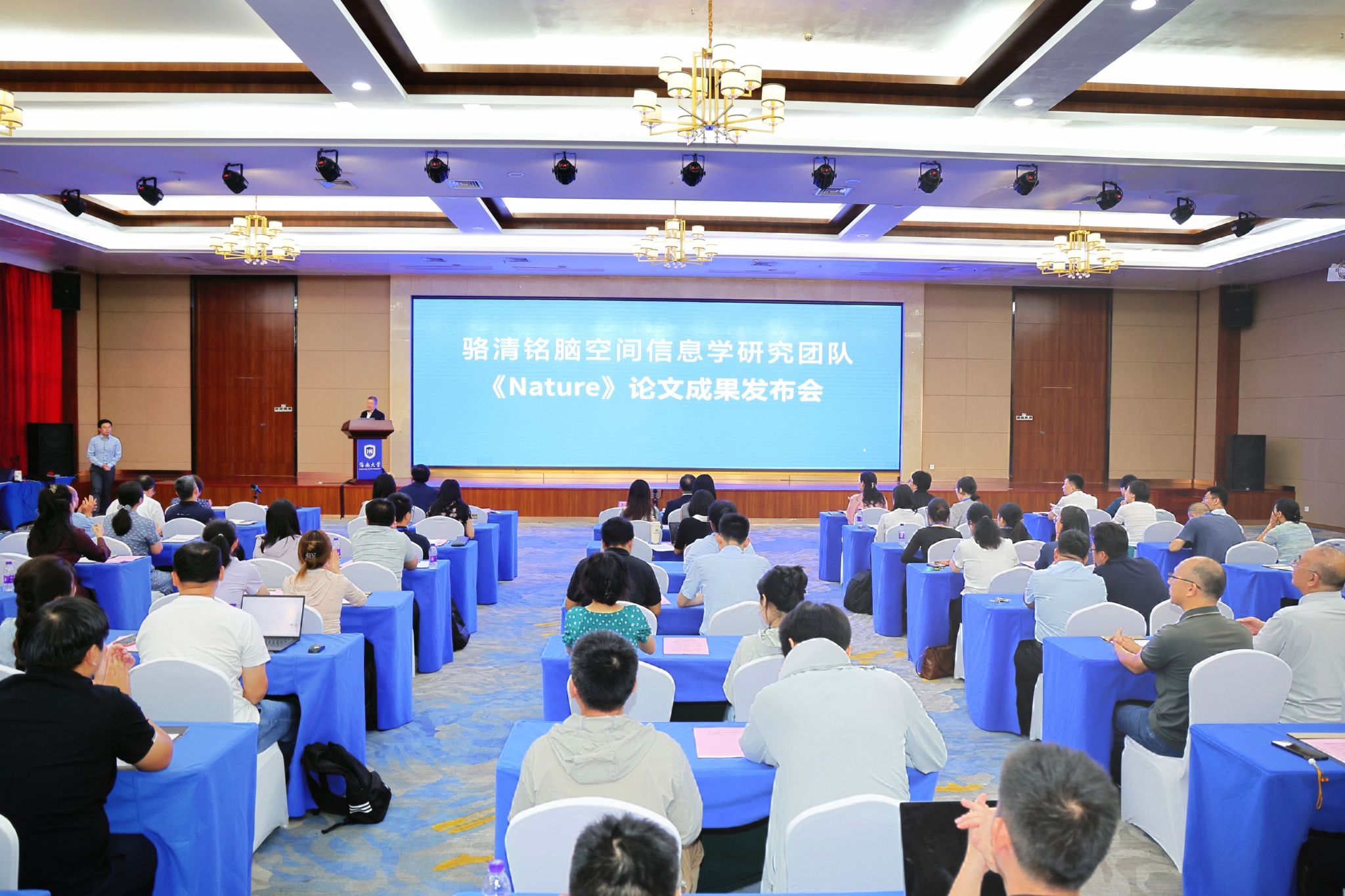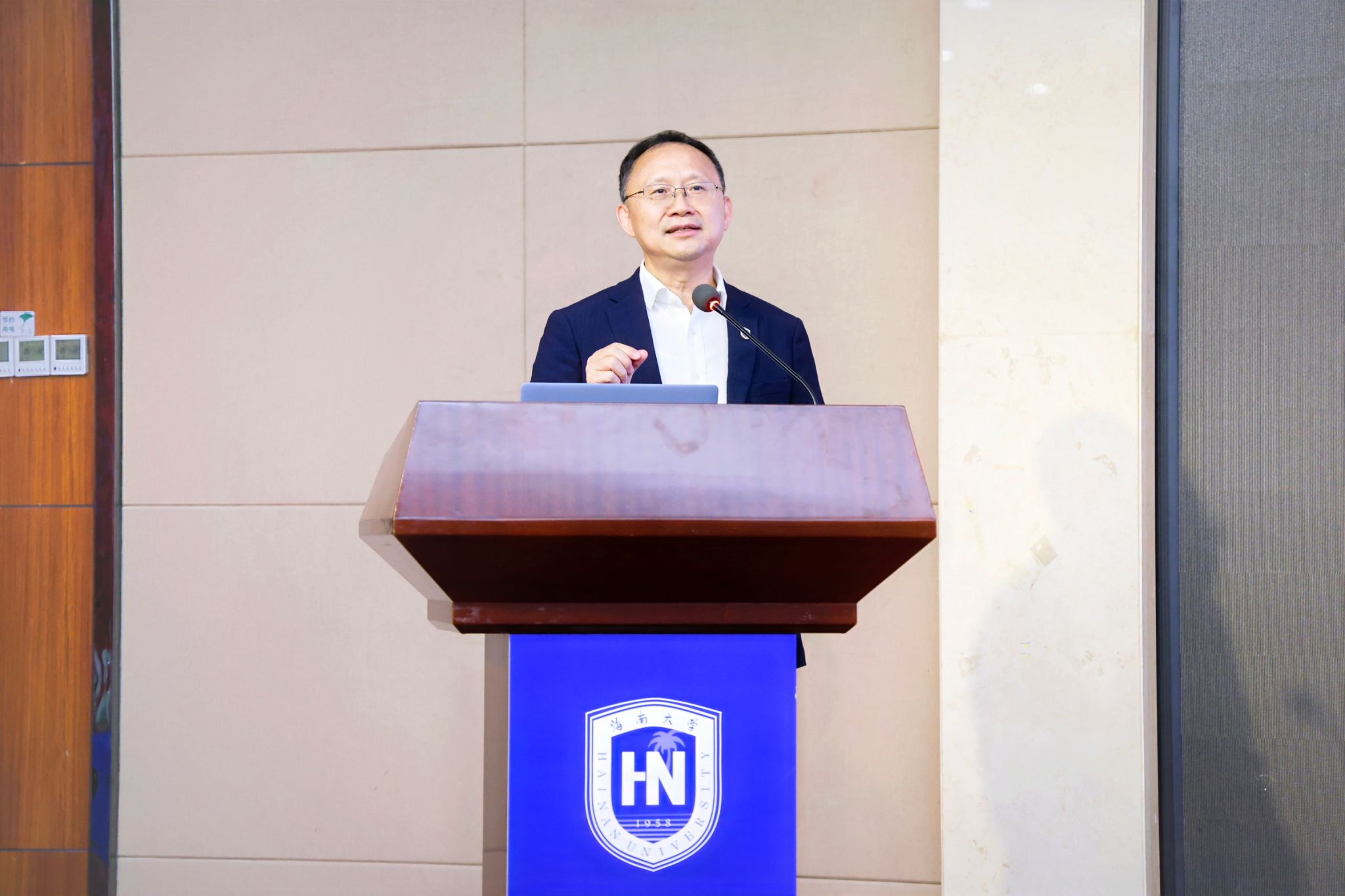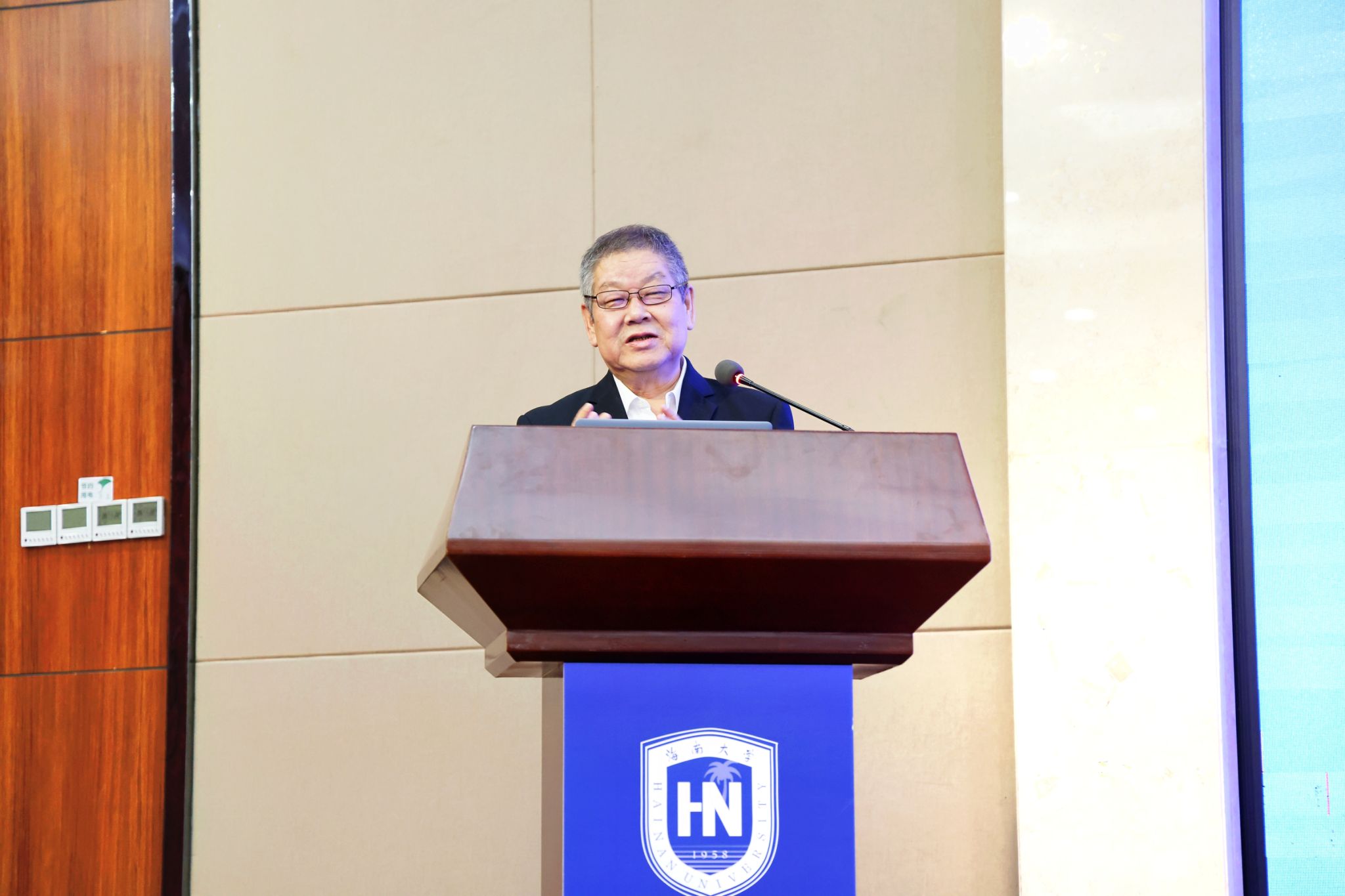On the morning of July 3rd, a press conference was held at the International Academic Exchange Center of Hainan University(HNU) to announce the publication of a groundbreaking paper by Luo Qingming’s Brain Space Information Research Team in Nature.

The press conference for the publication of Luo Qingming’s Brain Space Information Research Team’s paper in Nature is held at the International Academic Exchange Center of Hainan University on the morning of July 3rd.
At the conference, Luo Qingming, a member of the Chinese Academy of Sciences and a professor of the School of Biomedical Engineering at Hainan University, along with researcher Feng Zhao from the same school, introduced the research background and key findings of the study. Li Yunqing, president of the Chinese Society for Anatomical Science and professor at the Air Force Medical University, provided expert commentary on the research outcomes. Li Pengcheng, dean of the School of Biomedical Engineering at Hainan University, delivered a speech on the significance of research. The authors of the paper also took questions from the media.

Luo Qingming presents the key findings of the paper at the press conference.

Li Yunqing provides commentary on the research outcomes at the press conference.
Brain stereotaxic atlases have served as essential references for determining spatial locations and understanding the organizational principles of biological structures in the brain. Multi-omics studies, represented by connectomes and spatial transcriptomes, have entered the era of single-cell resolution, necessitating urgently a reference brain atlas with spatial localization capability at the single-cell level. Rodents, especially mice, are the most widely used animal models in biomedical research. However, to date, currently available mouse brain reference atlases available have yet to achieve spatial localization at the single-cell level.
To address this challenge, the research team employed their self-developed Micro-Optical Sectioning Tomography (MOST) technology to acquire submicron-resolution images of the entire mouse brain’s cytoarchitecture. This breakthrough allowed for the clear visualization of individual cells and tissue features within the brain. In addition, the team utilized a 3D big data segmentation technique and fast random access technology, enabling arbitrary-angle slice image generation at 1-μm resolution.
According to Luo Qingming, the research team constructed a two-dimensional digital atlas of canonical anatomical planes and, based on the high-resolution, high-quality continuous cytoarchitecture images captured by MOST, identified and delineated the 3D topography of 916 brain regions and nuclei. This work resulted in the construction of a comprehensive 3D atlas of the entire mouse brain, filling the gap in spatial localization at single-cell in existing mouse brain atlases. This achievement is poised to become a "gold standard" for brain science research worldwide.
Furthermore, the team developed an informatics-based platform for visualizing and sharing of the atlas images. Through the STAM Atlas website, the public can now access and download various datasets, including the cytoarchitecture images of the entire mouse brain, the distribution patterns of specific gene-type neurons, and single-neuron projectomes. This platform is set to serve as a versatile informatics tool for numerous individual scientists and science enthusiasts.
It is reported that the findings were published online in Nature, one of the world’s leading academic journals, on July 2nd, under the title A mouse brain stereotaxic topographic atlas with isotropic1-μm resolution. The paper’s corresponding authors are Luo Qingming; Gong Hui, a professor at the HUST-Suzhou Institute for Brainsmatics and the Wuhan National Laboratory for Optoelectronics; and Dong Hongwei, a professor at the University of California, Los Angeles. Feng Zhao is the first author.
Vice President Li Buhong presided over the press conference. Reporters from 17 media outlets—including Xinhua News Agency, People’s Daily, Economic Daily, Guangming Daily, Science and Technology Daily, and China Science Daily—were in attendance. Han Shumei, Director of HNU CPC Publicity Department, along with heads from related departments, faculty members, and student representatives, also took part in the event.
Translated by Wu Tong
Proofread by Zhang Ying